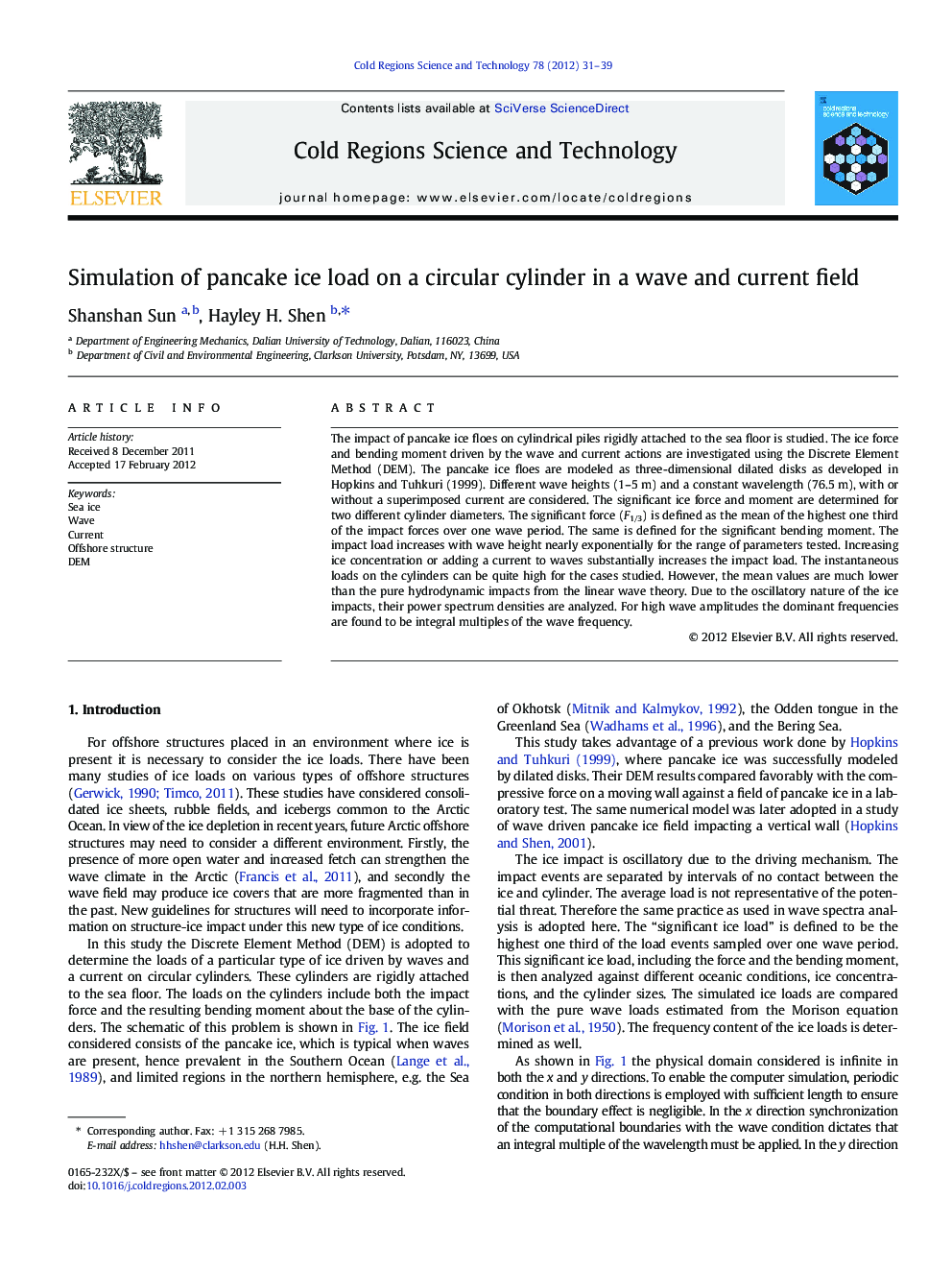| Article ID | Journal | Published Year | Pages | File Type |
|---|---|---|---|---|
| 4675992 | Cold Regions Science and Technology | 2012 | 9 Pages |
The impact of pancake ice floes on cylindrical piles rigidly attached to the sea floor is studied. The ice force and bending moment driven by the wave and current actions are investigated using the Discrete Element Method (DEM). The pancake ice floes are modeled as three-dimensional dilated disks as developed in Hopkins and Tuhkuri (1999). Different wave heights (1–5 m) and a constant wavelength (76.5 m), with or without a superimposed current are considered. The significant ice force and moment are determined for two different cylinder diameters. The significant force (F1/3) is defined as the mean of the highest one third of the impact forces over one wave period. The same is defined for the significant bending moment. The impact load increases with wave height nearly exponentially for the range of parameters tested. Increasing ice concentration or adding a current to waves substantially increases the impact load. The instantaneous loads on the cylinders can be quite high for the cases studied. However, the mean values are much lower than the pure hydrodynamic impacts from the linear wave theory. Due to the oscillatory nature of the ice impacts, their power spectrum densities are analyzed. For high wave amplitudes the dominant frequencies are found to be integral multiples of the wave frequency.
► DEM is used to simulate pancake ice impact on a cylinder. ► Ice floes are driven by waves and a superimposed current. ► Significant ice loads are much lower than wave loads. ► The frequency contents of the ice loads are analyzed. ► Impact loads are distributed over integral multiples of the wave frequency.
